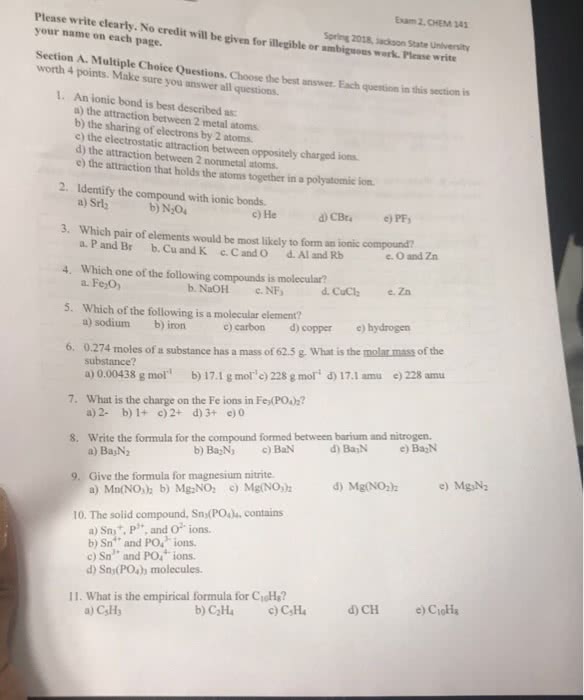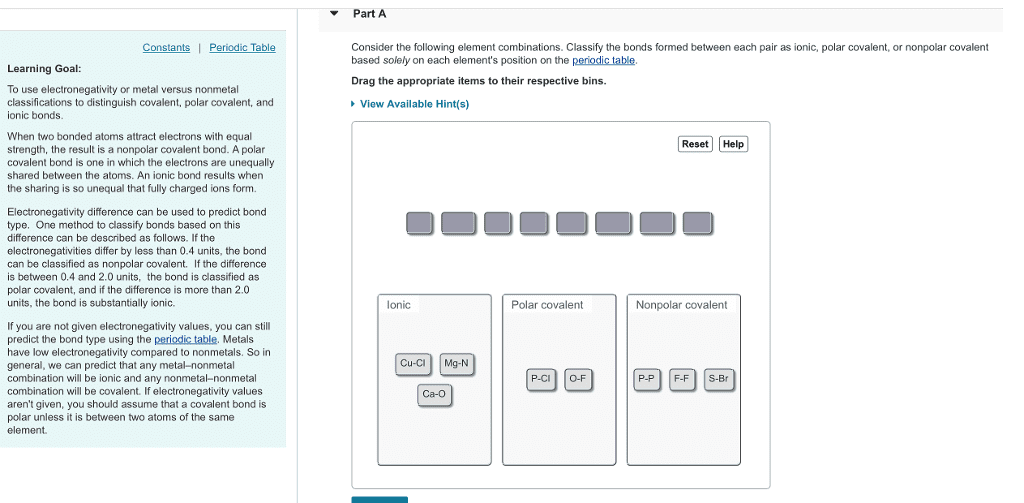CHEM 101 Chapter Notes - Chapter 5: Sulfite, Permanganate, Molecular Mass
Document Summary
Chemical bond- the sharing or transfer of electrons to attain stable electron configurations for the bonding atoms. Ionic bond- a chemical bond formed between two oppositely charged ions, generally a metallic cation and a nonmetallic anion, that are attracted to one another by electrostatic forces. Ionic compound- a compound composed of cations and anions bound together by electrostatic attraction. Covalent bond- a chemical bond in which two atoms share electrons that interact with the nuclei of both atoms, lowering the potential energy of each through electrostatic interactions. Molecular compounds- a compound composed of two or more covalently bonded nonmetals. Chemical bonds, the forces that hold atoms together in compounds, arise from the interactions between nuclei and electrons in atoms. In an ionic bond, one or more electrons are transferred from one atom to another, forming a cation (positively charged) and an anion (negatively charged). The two ions are then drawn together by the attraction between the opposite charges.




